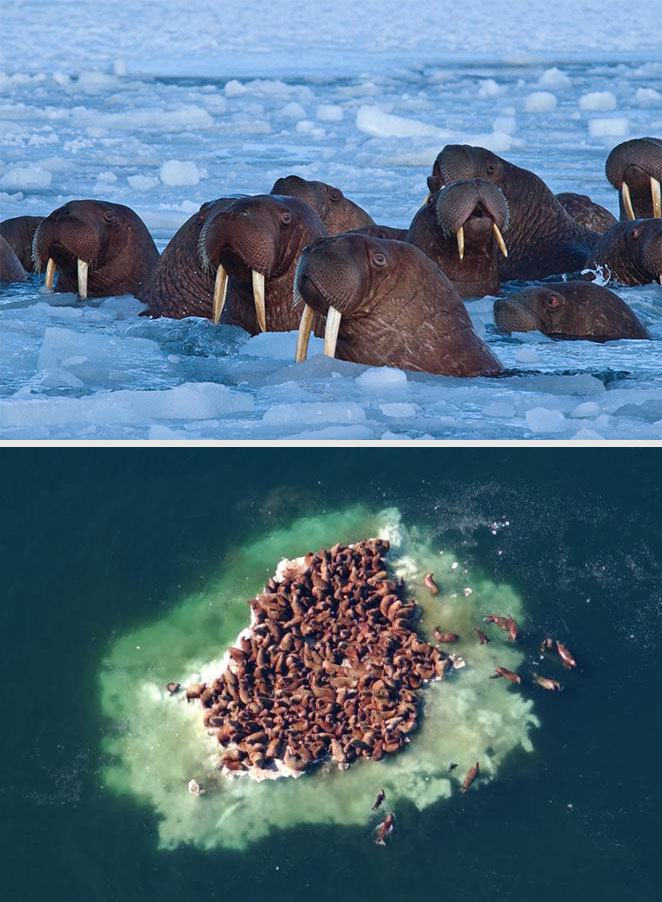Maps: Pacific Walrus: Important Habitat Areas

NOTES:
Area offshore Cape Newenham – Bristol Bay hunters indicate migration and foraging out to 75 miles from Cape Newenham and regard this area as important for the vitality of the walrus population (Qayassiq Walrus Commission 2009).
The shape for Total Subsistence Use Area is partly made up of Cenaliulriit CRSA data that represents all marine mammals collectively.
Biology

Bottom: Loss of summer sea ice in the Chukchi Sea is causing walruses to crowd onto remnant ice floes for resting and as a platform from which to forage for clams and other food on the seafloor. Photo credit: NOAA
Central Yup’ik: Asveq
St. Lawrence Island Yupik: AyveqInupiaq: Asvuiq
Scientific: Odobenus rosmarus divergensWe eat the clams in the stomachs when they’re fresh. They’re good. They’re already cooked.10 Joseph David—Mekoryuk
The way I understand, when the walrus hit the island from the south, they split. Some go between Nelson Island and some go on the west side of Nunivak Island and go up north.11Edward Shavings—Mekoryuk
Pacific walruses are gregarious animals, widely distributed throughout the waters of the continental shelf in the Bering and Chukchi seas.12 Adult females average 1,900 pounds and males 2,700 pounds.13 Walruses feed mostly on benthic invertebrates in waters that are usually less than 100 meters (300 feet) deep. Clams make up the majority of their diet, but they also feed on other invertebrates such as worms, snails, crabs, amphipods, shrimp, sea cucumbers and tunicates. They also occasionally prey on small seals.14 They use powerful suction to extract large clams from their shells and ingest small clams whole.15 Walruses graze the seafloor using sensitive vibrissae (whiskers) to locate their prey. Tusks are not used in feeding but as a dominance display in their social hierarchy. They also thrust their tusks into the ice to assist in hauling out onto ice floes and sometimes to abrade or break ice.16
Walruses are closely associated with the movements of sea ice throughout the year. During the summer months male and female walruses are mostly segregated into different areas. As the ice begins to melt and recede northward in the late spring, female walruses and their young move into the Chukchi Sea while adult males migrate either into outer Bristol Bay or along the Russian coast. In the winter both sexes return to the pack ice in the northern Bering Sea and congregate south of St. Lawrence Island to mate.17
The Eskimo Walrus Commission shares in management of walruses through a cooperative agreement with the U.S. Fish and Wildlife Service.




